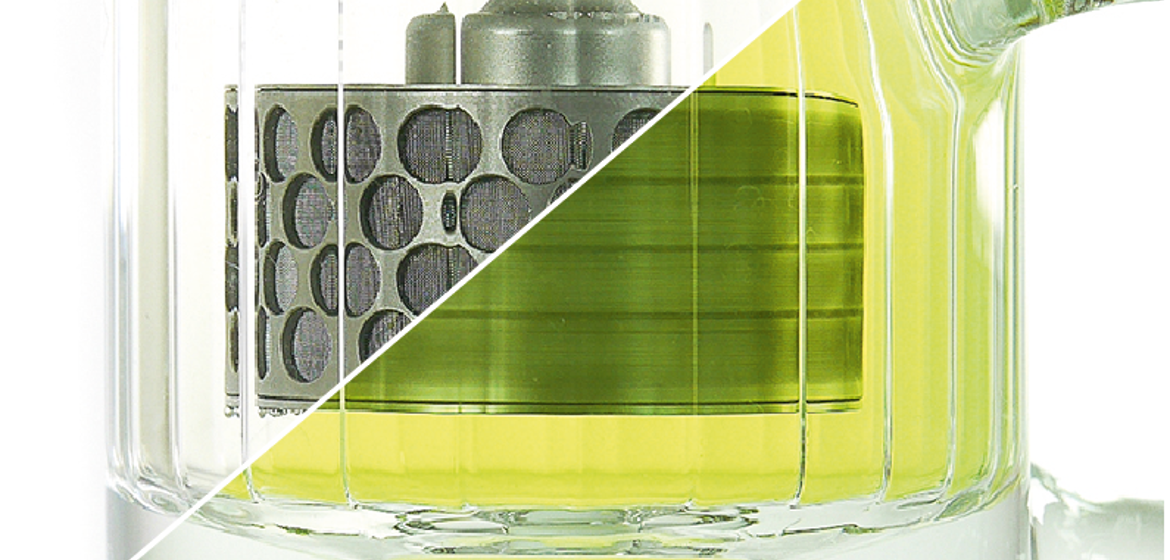With the rotating bed reactor, the immobilized enzyme is protected from mechanical damage even at high stirring speeds. This enables efficient mass transfer and provides advantages over traditional methods for biocatalysis. No more slow column processing, or stirred tank reactors that quickly degrade the solid-phase catalyst.

Biocatalysis by immobilized enzymes in a rotating bed reactor
Immobilized biocatalysis is the application of enzymes bound to solid supports, where they act as catalysts facilitating a chemical reaction. Traditionally, this process has been performed in stirred tank reactors or fixed bed reactors. The stirred tank will quickly destroy the solid support, leading to loss of catalysts and fouling of the product. Although the fixed bed (also known as column) circumvents this problem, it still suffers the challenge of severe pressure buildup which often makes deployment impossible at scale.
SpinChem provides reactors for convenient immobilized biocatalysis at all scales from benchtop to production. Begin developing your application in the lab using our Complete starter kits.
Details
Conditions: 4-nitrophenyl octanoate (30 mg) in aqueous phosphate buffer (150 mL, 0.1 M, pH 7.4, 0.1% Triton X100) was hydrolysed at 30 °C using Purolite® CalB immoplus™ (150 mg) filled into a SpinChem® rotating bed reactor (RBR) S2 rotating at 500 rpm within a SpinChem® flower-baffled reaction vessel V2. The reaction was monitored for 30 min by filming the formation of the yellow 4-nitrophenoxide product (abs max ca 405 nm).
